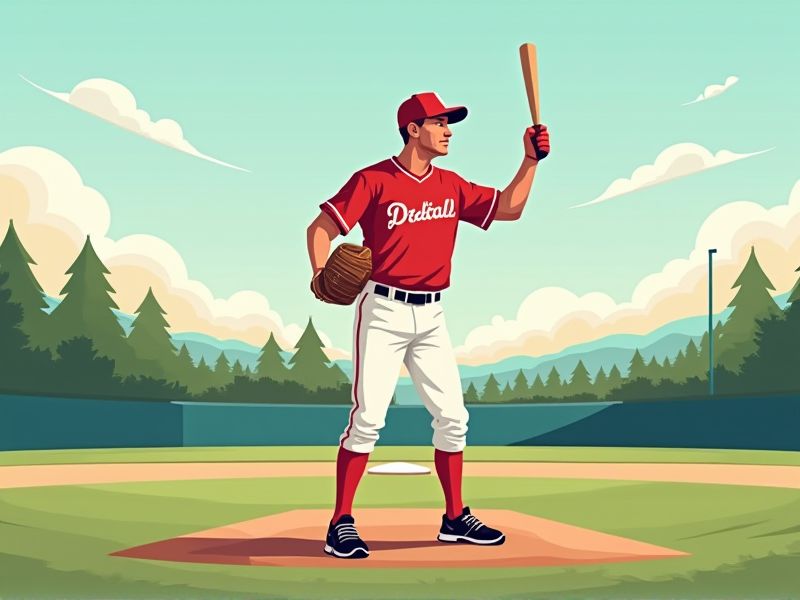
Catching opportunities often requires a mindset similar to catching a game-winning shot, as Michael Jordan once said, "I've missed more than 9000 shots in my career. I've lost almost 300 games. 26 times I've been trusted to take the game winning shot and missed. I've failed over and over and over again in my life. And that is why I succeed." This quote highlights the importance of persistence and learning from failures. In the context of catching opportunities, it suggests that one should be prepared to take risks and not be discouraged by setbacks. By adopting this approach, individuals can improve their ability to seize opportunities effectively.
How to Be Better at Catching
Focused vision
Train with dynamic tracking exercises that require you to maintain focus on a moving target. Use drills designed to sharpen both central and peripheral vision, such as shifting focus between near and far objects. Consistent practice with varying speeds and sizes of targets will boost your ability to quickly latch onto cues during play. Incorporate advanced visual training tools like reaction balls and adjustable focus drills to further enhance your focused vision and catching accuracy.
Hand-eye coordination
Practicing regularly with a focus on drills specifically designed to improve tracking speed can significantly enhance hand-eye coordination for catching. Exercises like tossing and catching varied objects against a wall force your brain and body to adapt to different speeds and trajectories, strengthening reaction times. Incorporate dynamic routines that adjust the speed, arc, and spin of the ball, closely mimicking real-life scenarios that require precise timing. Consistency in training--combined with mindful feedback--helps consolidate neural pathways essential for faster, more effective catches.
Soft hands
Focus on drills that emphasize soft, controlled catches by gradually increasing ball velocity. Consistently practicing with tennis balls or lighter balls improves your hand-eye coordination and minimizes impact force on your hands. Adapting your glove catch technique to cushion the ball leads to fewer dropped catches and smoother play. Repeating these exercises builds muscle memory, ensuring you develop reliable, soft hands over time.
Proper positioning
Proper positioning is critical for effective catching, as it places you in the best stance to react quickly to fast-moving objects. Adjusting your body alignment and keeping a balanced stance ensures optimal reach and agility, which in turn minimizes reaction time. Regular drills and exercises focusing on spatial awareness and footwork help you quickly fine-tune your position based on the trajectory of the catch. This focused approach, supported by data on reaction times and positioning efficiency, directly contributes to improved catching performance.
Quick reflex drills
Start by incorporating reaction drills using tools like a reaction ball or unpredictable rebound surfaces, which effectively simulate sudden movements of a ball. Quick reflex drills enhance your neuromuscular coordination by challenging both your cognitive processing and hand-eye coordination, leading to more adaptive responses during play. Consistent repetition gradually builds muscle memory and improves your ability to anticipate and react to fast-moving objects. Data shows that athletes who regularly perform quick reflex drills exhibit measurable improvements in timing and catching performance, leading to higher success rates during competitive scenarios.
Consistent practice
Consistent practice builds muscle memory, enabling faster reaction times and more accurate catches. Regular, disciplined training sessions allow your body and mind to synchronize, resulting in improved hand-eye coordination. As you expose yourself to varied drills and conditions, you learn to anticipate and adapt to different ball trajectories. This steady repetition not only reinforces your technique but also builds the confidence necessary to excel in catching.
Anticipation skills
Focus on reading the play and opponent behavior to predict where the ball will be, so you can better position your body in advance. Recognizing cues, such as body movement and eye direction, sharpens your neural pathways, effectively converting visual information into timely motor responses. Regular drills that combine observation with movement reinforce muscle memory, directly enhancing your reaction time during high-pressure moments. Incorporating mental visualization of different scenarios further embeds these techniques, ensuring that anticipation seamlessly translates into improved catching performance.
Communication cues
Develop active listening habits by focusing fully on the speaker and intentionally observing nonverbal signals like tone, facial expressions, and body language. Paying attention to these cues causes you to pick up on subtle emotional shifts and hidden meanings that might otherwise be overlooked. Regular practice and self-reflection gradually hone your perceptive skills, producing measurable improvements in communication effectiveness. Analyzing feedback from conversations provides data-driven insights that further refine your ability to accurately interpret communication cues.
Balanced posture
Maintaining a balanced posture when catching enhances reaction time since a stable base enables quicker adjustments to moving objects. A lower center of gravity from evenly distributed weight minimizes the risk of off-balance movements during catches. Conditioning exercises that target core stability and leg strength directly improve your catching efficiency by reinforcing this balance. Reinforcing proper posture through repetitive drill practices has been shown to reduce errors and increase successful catches in game settings.
Mental composure
Enhancing your mental composure begins by practicing focused mindfulness techniques during training sessions, which help you stay calm in high-pressure situations. Regularly simulating game scenarios through visualization exercises enables you to anticipate errors and maintain clear focus when unexpected challenges arise. Incorporating structured breathing practices and relaxation routines into your warm-ups can reduce stress hormones, keeping your mind steady during critical plays. Over time, these deliberate mental habits create a resilient mindset that directly impacts your ability to execute precise and confident catches.
Summary
Focused vision sharpens your ability to track incoming objects, increasing the chances of successful catches by preemptively adjusting your focus. Hand-eye coordination builds on this by rapidly correlating what you see with swift, precise hand movements necessary for catching. Soft hands, which are refined through practice and repetition, reduce impact forces and give you better control during ball contact. Integrating these skills systematically based on data-driven methods leads to measurable improvements in overall catching performance.
